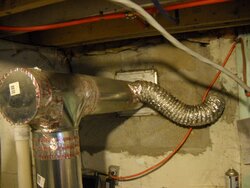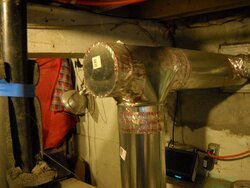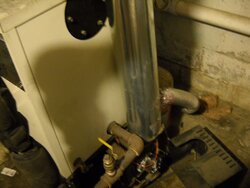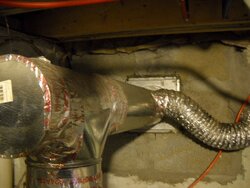I haven't found this document in English but in the French version of a Ravelli RDS manual I found this phrase :
<< Le système RDS permet à l’installation dans laquelle est assemblé, une fois programmées les valeurs calculées, de fournir toujours la correcte quantité d’air pour obtenir le parfait rapport stœchiométrique.
Crudely translated this is claiming that once the system is set-up correctly it will always supply air to the combustion in the correct Stoichiometric ratio.
This obviously is a very good thing and on paper sounds impressive.
However I would like the views of this forum on the likelihood of ever attaining such an ideal.
I offer two evident problems :
A : different pellets will have different characteristics
B : varying pellet mass being dropped down the chute.
IS it possible ?
Does anyone know what the correct stoichiometric ratio is for pellets ?
<< Le système RDS permet à l’installation dans laquelle est assemblé, une fois programmées les valeurs calculées, de fournir toujours la correcte quantité d’air pour obtenir le parfait rapport stœchiométrique.

Crudely translated this is claiming that once the system is set-up correctly it will always supply air to the combustion in the correct Stoichiometric ratio.
This obviously is a very good thing and on paper sounds impressive.
However I would like the views of this forum on the likelihood of ever attaining such an ideal.
I offer two evident problems :
A : different pellets will have different characteristics
B : varying pellet mass being dropped down the chute.
IS it possible ?
Does anyone know what the correct stoichiometric ratio is for pellets ?


 l : and now you tell me they can get blocked up with the soot as well.
l : and now you tell me they can get blocked up with the soot as well. What are the health issues the Chinese going to have with all that smog with unrestricted emissions? Hope we can get the stoves to burn better with some simple modifications. Studying simple rocket stove designs as now there is at least three designs for pellet burning without power.
What are the health issues the Chinese going to have with all that smog with unrestricted emissions? Hope we can get the stoves to burn better with some simple modifications. Studying simple rocket stove designs as now there is at least three designs for pellet burning without power. Japan making glow in the dark tuna so its easier to catch em. Self cooking cows grazing the hot zones.
Japan making glow in the dark tuna so its easier to catch em. Self cooking cows grazing the hot zones.


